TABLE OF CONTENTS
Do you know how to use an AED?
Even in Japan, there are many people who know what an AED is but do not know how to use it.
Anybody who is young or old, with or without medical history might experience a situation in which the heart cannot operate normally.
If you use an AED in such a situation, you might restore the heart of the victim to normal by giving an electric shock.
Knowing about AEDs in case of emergency can save the precious lives of the victims.
In this article, we give explanation on how to use an AED.
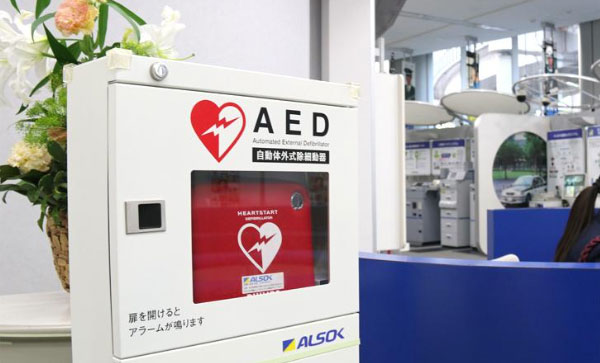
AED stands for “Automatic External Defibrillator”.
I suppose it’s somehow a formal and specific term, but as the name suggests, AED is “a device that automatically removes fibrillation”.
I would like to give further explanation about “fibrillation” in more details from the next time.
But when the heart has a spasm for some reason, the AED automatically analyzes the condition of the heart and determines whether an electric shock is necessary.
It is an easy-to-use device, and even ordinary citizens (non-medical personnel) without medical knowledge can perform lifesaving activities by following the in-built voice prompts.
Sudden cardiac arrest can happen to anyone at any time.
Deepening your understanding of AEDs, even a little, might help save one precious life.
Our Services – Automated External Defibrillator (AED).
When you find out an injured or diseased person, the lifesaving measures until the arrival of the ambulance service are called basic life support. Basic life-saving measures include a series of steps from requesting an ambulance to confirming the patient’s consciousness and using an AED.
First of all, I will explain in detaisl step by step the actions before using the AED.
If you see an injured person, do not rush to them immediately. Firstly, check the safety of your surroundings. Treatment in a dangerous place might not only expose the patient to an even more dangerous situation, but might also harm you if you give an attempt.
In order to avoid secondary damage, check the safety of your surroundings first, such as whether there are any cars coming or going, or whether there is a possibility of falling objects.
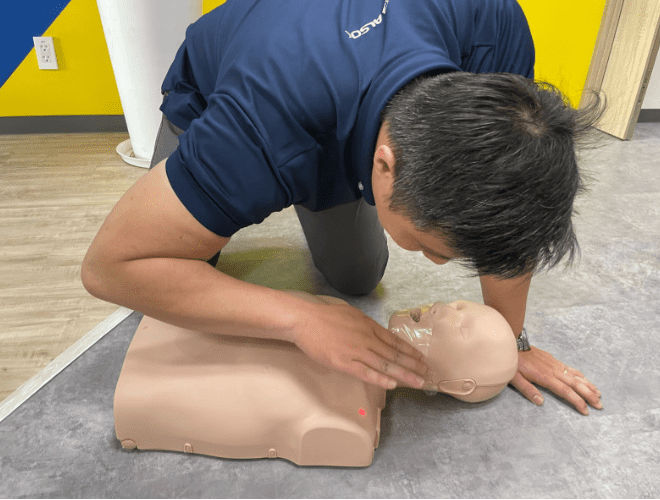
Once you have confirmed the safety of your surroundings, approach the casualty and check their consciousness. While tapping on the shoulder, shout loudly “Are you okay?”. Call the name in case you know it.
At this time, do not shake your body or force your body up. In order not to burden the injured or diseased person as much as possible, tap them on the shoulder and shout to them in their ears.
Next, shout out loudly from the surrounders and ask for help. There are limits to what one person can do. Get help from as many people as possible.
At this time, cooperation should be done by specifying the person and action, such as “Please call an ambulance” or “Please bring an AED” instead of saying “Please lend me a hand”.
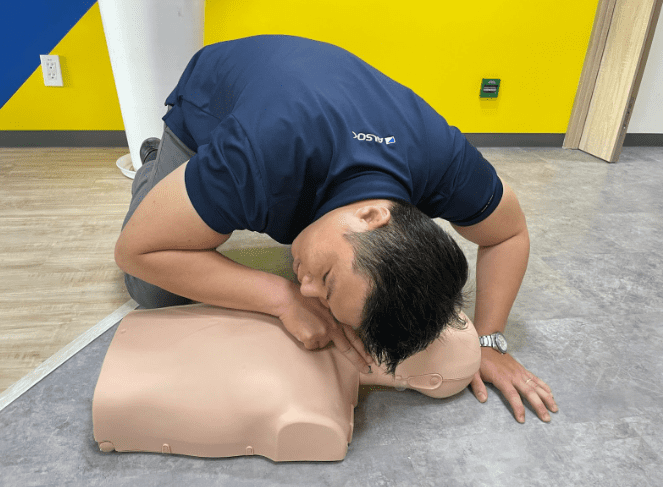
If the victim is unresponsive, check the chest for breathing. It is easier to observe the up-and-down movement of the chest if you bring your face to the position of the patient’s face and observe the chest from a parallel angle.
Cardiac arrest should be determined if breathing cannot be confirmed or breathing is abnormal. Also, check for breathing within 10 seconds.
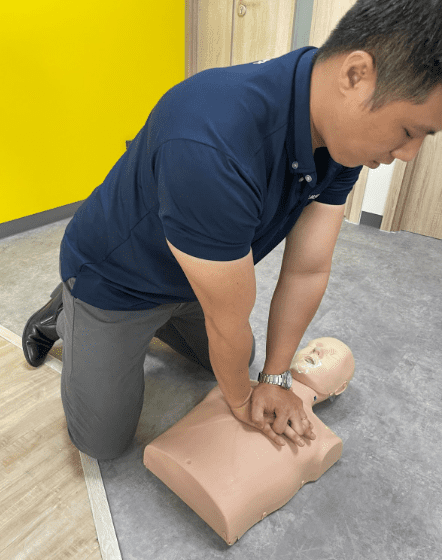
If breathing cannot be detected, perform chest compressions immediately. Chest compression is an important procedure to help pump blood throughout the body from the heart, which has stopped working normally.
Lay the victim on their back and sit next to their chest. Place one palm on the lower half of your ribs (approximately in the middle of your chest) and fold the other palm on top of your other so that your weight is applied vertically to keep your elbows from bending. The 2 points are pressing on the chest with a depth of about 5 cm, and to repeat at a rate of from 100 to 120 times per minute.
When you have completed the above actions, wait for the arrival of the AED. The key point is to perform chest compressions continuously until the AED arrives.
Once the AED arrives, all you have to do is follow the AED’s voice instruction and use AED.
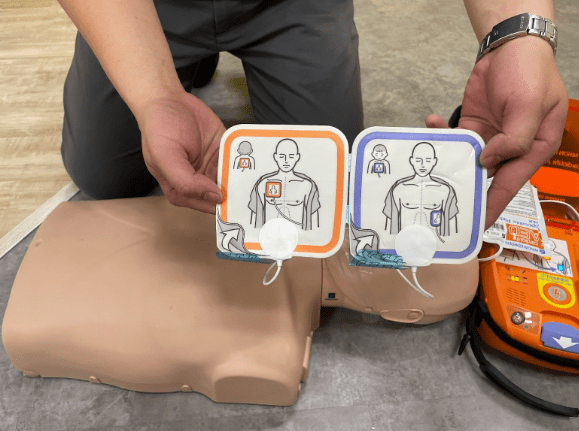
When the AED arrives, first turn it on. When the power is turned on, voice guidance will automatically flow. Place the electrode pads to the victim according to the guidance.
Do not stop chest compressions during this time.
When the electrode pads are attached, the AED automatically analyzes the heart rhythm. During the analysis, there would be guidance such as “Analyzing heart rhythms”. “Do not touch the patient.”
After analysis, the AED will decide if a shock is needed.
If a shock is required, proceed to deliver the shock.
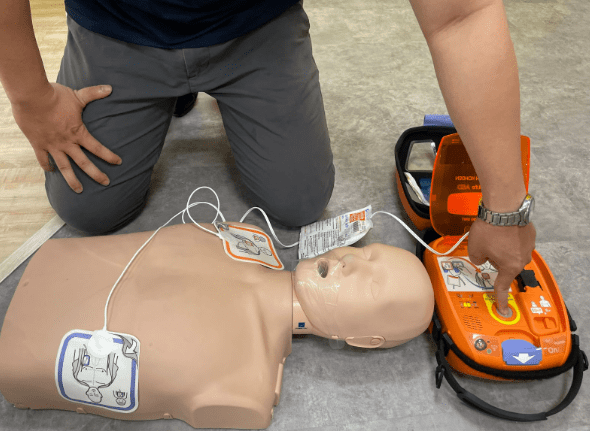
If an electric shock is required, a voice guidance “Shock advised….Charging.” will be given out. When the preparation for the electric shock is ready, the AED will instruct you to press the button. Follow the instructions and press the button.
Continue chest compressions following the voice guidance even after receiving the electric shock. After that, AED analyze the heart rythmn every 2 minutes. If you hear a voice telling you to “Stay away from the victim”, follow the instructions and dont touch the patient.
Repeat this until an ambulance arrives.
This time, I introduced basic life support and how to use an AED. Anyone can use an AED, but if you know the contents of this article, you can increase the victim’s survival rate.
ALSOK can also provide training on basic life support and how to use an AED, so please feel free to contact us anytime.
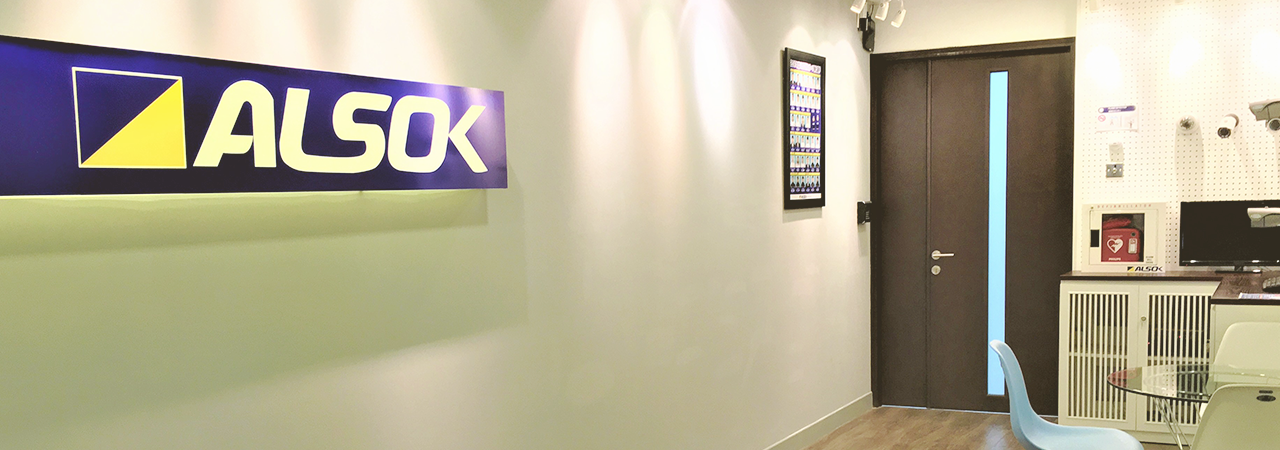
Delivery as soon as possible after ordering from the inquiry, it is possible to respond quickly to unforeseen situations.
In addition, it is also possible to set the device voice with bilingual languages from 3 available languages (English, Japanese and Vietnamese)
For further information, please contact the nearest ALSOK office.